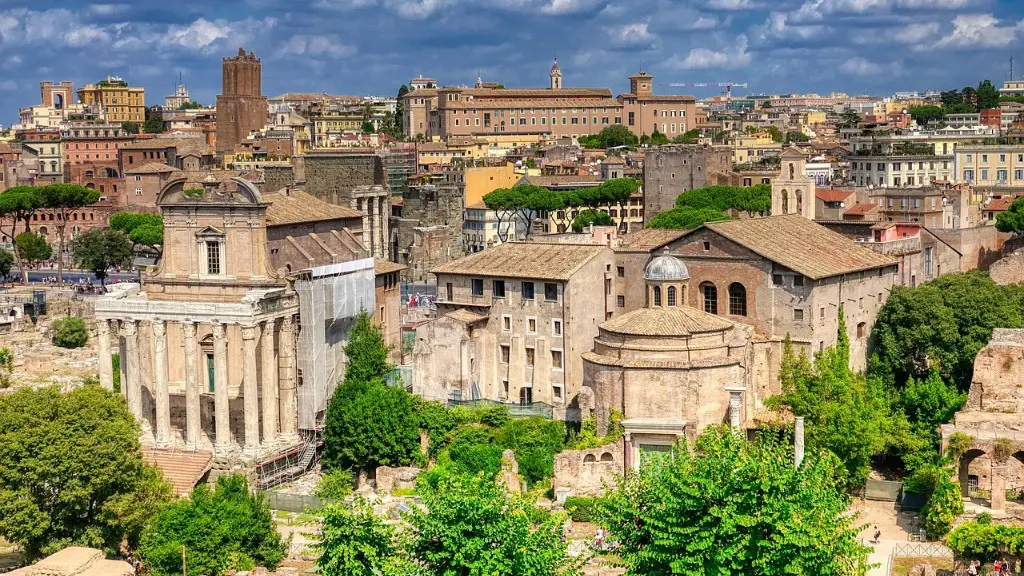Ancient Romans had a diverse and culturally sophisticated diet. There are records that suggest that the agricultural system of Rome provided a wide variety of food products and ingredients to people, who then would cook and prepare it in their own homes. The food prepared in the home of an average Roman family was a testament to the breadth of Roman culture, with recipes often featuring Latin, Greek, and African ingredients, influence and techniques.
In the Roman home, each family member had their own role to play in the food preparation process, with mothers and grandmothers being the heart of the culinary operations. Women were generally responsible for the day-to-day food production, from choosing the best produce, learning recipes from friends and relatives, to supervising the kitchen staff that did most of the physical work. Millennia ago, women in Ancient Rome were the cooks in the family.
Mothers, grandmothers and household slaves created meals based on a variety of seasonal ingredients. Gardens, fruit trees, and figs provided plentiful and varied sources of fresh produce. A typical Roman diet included bread and cheese, legumes, vegetables and fruit, including sweet, tart and bitter varieties. Meat, such as pork, lamb and beef, were occasional meals for special occasions like festivals or family-reunions. Fish was also popular, and fishing was the major occupation of Arcadian immigrants to Rome.
Chefs who cooked in family kitchens were either slaves or hired hands. In some homes, slaves were trained to prepare meals from recipes handed down from the women in the households, while in other homes, the women were in charge of the kitchen. Although the women were in charge of the food preparation tasks, it was the men that were responsible for the shopping at local markets or commissioning outside chefs to prepare meals.
Families may have also had slaves to help in their kitchen and with their meals; however, the slaves had to obey their masters and follow strict recipes and procedures. There are records of some slave owners even naming their slaves after the dishes they were most famous for preparing. This was done both to show off their wealth and to make sure the slaves understood their value to the family.
Garnishes and Sauces
In Ancient Rome, food was garnished and seasoned with a range of condiments. Sauce recipes developed around the Mediterranean coast and were imported from Greece, Egypt, and North Africa. These included different kinds of sauces, olives, and capers. Rice, barley and chestnuts were also popular ingredients, and sauces were often made with honey, eggs, and spices.
Herbs played an important role in the cuisine. Oregano, peppermint, basil, thyme and garlic were used for flavoring many dishes, and as a garnish. Roman cooks used vinegar as a preservative and seasoning. Some popular sauces included garum, a salty fish mixture, caroenum, a rich sweet and sour sauce, and silphium, the ancient condiment made from a rare species of fennel.
Food Preparation Rituals
The preparation of food in ancient Rome was more than just a daily chore. Evidence found by archaeologists suggests that the preparation was done with great care and attention. Even basic dishes were accompanied by rituals, such as the pounding of grains, grinding of spices and washing of vegetables.
In addition to that, a range of special rituals were performed on festivals, especially during the time of Saturnalia since it was an important holiday to celebrate. Food was prepared in honor of the gods and goddesses, with events always taking place around banquet tables. Eating and drinking might start after lengthy prayer and offerings were made.
Food, Religion and Social Status
The Roman Empire was very much structured and marked with social roles and religious divisions. For example, some animals were thought to be sacred and were not to be prepared during certain days of the year. On the other side, different classes of people had reserved places at the table for special occasions.
For example, the most privileged guests were given the honor of reclining at the couch. For this elite class of citizens, the table was a source of pride and a way of displaying their wealth to others. Wealthy citizens might offer an expensive banquet while displaying their opulence to their guests.
What is more, religious and spiritual aspects were connected with the food rituals in Ancient Rome. Many regions and provinces had their own specific rituals around food, time and place to honor the gods. Perceived safety and protection also came from the rituals done to prepare meals and it was thought that they brought luck to the owners of the household.
Lessons from the Ancient Times
When talking about food in ancient Rome, the most important lesson we can learn from the past is how important it was for families to come together and take pleasure in their meals. During those times, cooking was about more than just survival. It was also a way to express love, care, and joy that brought different members of a family together.
Today, when technology, modern day jobs and tight schedules distract us from our family, it is important to find the time to come together and enjoy our meals. Relaxing during meals, being sociable and enjoying the company of our family and friends can still bring a lot of joy and satisfaction.
Ultimately, Ancient Rome Teaches us
Ultimately, Ancient Rome teaches us that food has always been a source of comfort and pleasure, and the act of preparing food is a way of expressing love, care and joy. We can learn from the Ancient Romans how to fill our tables with good food and spend quality time with our family members.
Food in Ancient Rome was a reflection of culture, a way of connecting individuals from different backgrounds and enriching our lives with its aromas, textures, tastes and stories.
Meals as Cultural Experiences in Ancient Rome
Meals in ancient Rome were more than just a source of nutrition – they were also a kind of cultural expression. Guests in family homes enjoyed dishes that brought comfort and familiar flavors. At the same time, they could experience exotic flavors and the influence of distant cultures.
Food was a way to share knowledge, experiences and to make connections. For example, feasts during festivals and special occasions were a way to celebrate and honor the gods, as well as an opportunity to exchange gifts, stories and history.
Social Role of Food
Food also had a strong social function in Ancient Rome. It was a way for families to come together and strengthen their connections, as well as a way to create relationships with other families and members of the community.
Feasts and banquets served as a way to display social status and wealth and were a great way for the wealthy to impress their guests. The poorer citizens could also use food as a way to display their wealth and social status, although often in restricted quantities.


